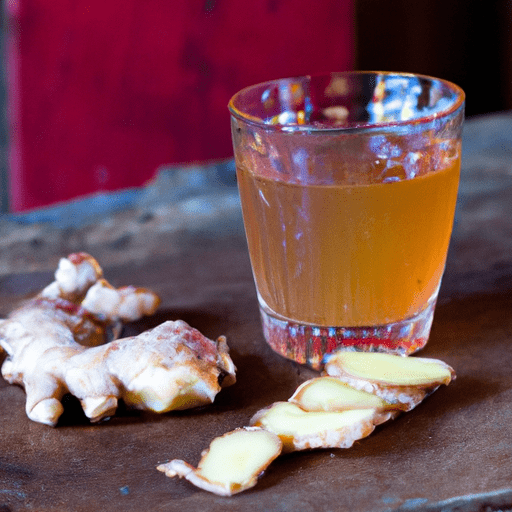Ginger Beer: A Zesty and Refreshing Elixir
Ginger beer, with its invigorating blend of spicy and sweet flavors, has long been celebrated as a versatile and refreshing beverage. While it’s commonly enjoyed on its own, its culinary applications extend far beyond a simple thirst-quencher. Join us on a journey as we explore the distinct taste, culinary uses, nutritional value, and intriguing history behind this beloved beverage.
The Flavors that Tantalize
Ginger beer owes its unique character to the aromatic and pungent spice it is named after. The taste profile of ginger beer is often described as zesty, warming, and subtly sweet. The fiery ginger notes are balanced with a hint of sweetness, resulting in a flavor that is simultaneously bold and invigorating. Served chilled, this effervescent drink provides a delightful tingling sensation on the palate.
Culinary Applications
Beyond its role as a tantalizing beverage, ginger beer serves as an exceptional ingredient in cooking. Its distinctive flavor profile lends itself to an array of culinary creations. Here are a few popular ways in which ginger beer can elevate your dishes:
1. Marinades and Glazes
Ginger beer’s tangy sweetness makes it an excellent base for marinades and glazes, particularly for meats like chicken, pork, and even fish. Its natural acidity helps tenderize proteins while infusing them with a delightful gingery kick. Use it to baste your meat during grilling or baking for a delectable caramelized glaze.
2. Stir-Fries and Sauces
When incorporated into stir-fries and sauces, ginger beer injects a vibrant flavor that complements an array of ingredients. Its ability to enhance both sweet and savory dishes makes it an ideal addition to Asian-inspired stir-fries, adding depth and complexity to your culinary creations. Moreover, ginger beer can be a key ingredient in making homemade ginger-based sauces, enhancing the taste of dishes like stir-fried noodles, stir-fried vegetables, or even summer rolls.
3. Desserts and Baking
Experimenting with ginger beer in desserts unveils a world of exciting flavors. From ginger beer-infused cakes and cookies to ice creams and sorbets, the possibilities are endless. The subtle spiciness of ginger pairs harmoniously with sweet treats, creating a delightful contrast that awakens the taste buds. Incorporate ginger beer into your baking repertoire to introduce a burst of flavor into your favorite sweets.
Nutritional Highlights
As a natural product derived from ginger, ginger beer offers more than just a delicious taste. It also boasts several health benefits. Here are a few nutritional highlights that ginger beer brings to the table:
Digestive Aid: Ginger, the main component of ginger beer, is revered for its digestive properties. It can help alleviate nausea, reduce bloating, and improve overall digestion.
Anti-inflammatory Properties: Ginger contains potent anti-inflammatory compounds that may contribute to reducing inflammation in the body. Regular consumption of ginger beer may help alleviate symptoms of conditions like arthritis and promote a healthy immune system.
Vitamin Boost: Ginger beer contains vitamins and minerals like vitamin B6, magnesium, and phosphorus, providing a small but valuable nutritional boost.
A Rich Tapestry of History and Tradition
Ginger beer, although often associated with British culture, has a heritage that spans across continents and centuries. Originating in England as a fermented alcoholic beverage in the 1700s, it quickly became a popular choice, particularly among sailors who believed in its ability to alleviate seasickness. Over time, ginger beer evolved into a non-alcoholic alternative, adored for its bold flavors and thirst-quenching qualities.
Interestingly, ginger beer owes its characteristic effervescence to the process of fermentation, where yeast consumes the ginger’s natural sugars and produces carbon dioxide. This natural carbonation sets ginger beer apart from its ginger ale cousin, which is typically artificially carbonated.
Discover the Zing of Ginger Beer
Whether sipped on its own, used as a cooking ingredient, or enjoyed as a mocktail with a splash of citrus, ginger beer continues to captivate taste buds worldwide. Its zesty and aromatic qualities, coupled with its rich history and adaptable nature in cooking, make it a beloved beverage with infinite culinary possibilities. So, take a leap into the world of ginger beer, and let its bold flavors add a sparkling touch to your culinary creations and refreshment repertoire.
Origin: Ginger beer is a carbonated beverage that originated in England in the mid-18th century. It was initially made by fermenting ginger, sugar, and water, and was sometimes allowed to naturally carbonate through the fermentation process.
Common Uses: Ginger beer is commonly used as a mixer for various cocktails, such as the Moscow Mule and the Dark ’n’ Stormy. It is also enjoyed on its own as a refreshing and spicy non-alcoholic beverage. Additionally, ginger beer is sometimes used as an ingredient in marinades, sauces, and baked goods to add a zesty kick.
Nutritional Benefits: Ginger, the main ingredient in ginger beer, contains several beneficial compounds such as gingerol, which has antioxidant and anti-inflammatory properties. Ginger is also known to aid digestion, alleviate nausea, and potentially reduce muscle soreness. However, it’s important to note that the nutritional benefits of ginger beer may vary depending on the brand and recipe.
Unique Properties and Historical Significance: Ginger beer can be either alcoholic or non-alcoholic, with most commercially available options being non-alcoholic. Historically, ginger beer was brewed at home and naturally carbonated through fermentation, which resulted in a slightly alcoholic version with a mild fizz. This homemade ginger beer was popular in Britain during the Victorian era, and it played a role in the temperance movement as a non-alcoholic alternative to beer and spirits. Modern ginger beers are typically carbonated artificially and contain no alcohol.




Use the share button below if you liked it.
It makes me smile, when I see it.